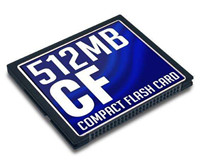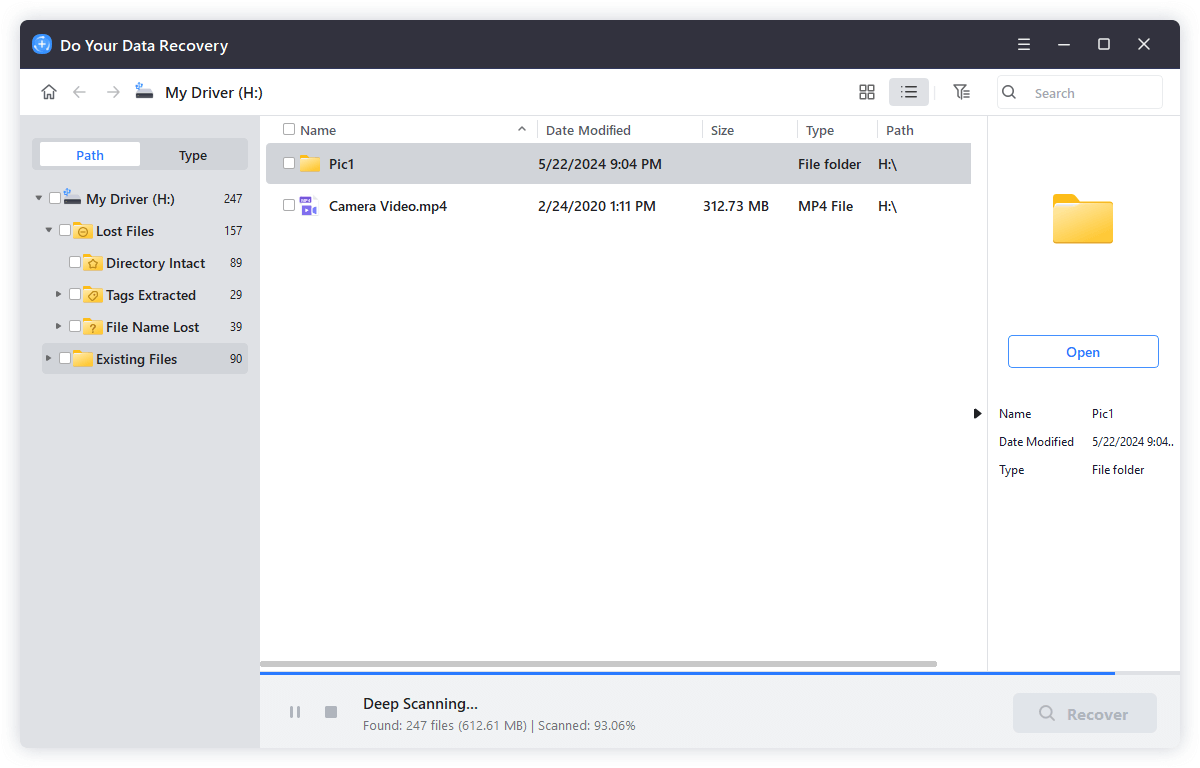Quick Navigation:
- Steps to Recover Lost Data from CF Card
- Additional Tips for CF Card Recovery
- Conclusion
- FAQs About CF Card Data Recovery
Do not worry about losing important CompactFlash (CF) card data. This guide will assist you in getting back your valuable files. Returning your data starts with learning about the most common reasons it gets lost, like accidental deletions, coding mistakes, or problems that come out of the blue. Think of your CF card as a small locker where you store memories. It is important to stop using it immediately to avoid more problems.
We'll show you how to use easy-to-understand steps, good recovery software, and why a safe recovery spot is so important. This guide ensures everyone can safely return their important files, even those who have never done data recovery before.
Steps to Recover Lost Data from CF Card
Stop Using the CF Card Immediately:

It is very important to stop using your CF card when you learn you have lost data. If the data is kept being used, it may be overwritten, making it harder to return. Put the CF card somewhere safe until you can start the recovery/repair process.
Choose the Right Data Recovery Software:
Different data recovery apps are on the market, each with features and functions. Do Your Data Recovery, EaseUS Data Recovery Wizard, Disk Drill, and Recuva are common choices. Before you choose any software, make sure it can specifically recover data from CF cards and read reviews from other users to get an idea of how well it works.
Do Your Data Recovery is an award-winning data recovery software. This CF card recovery software is pretty simple to use. In this article, we will show you how to recover lost data from a CF card with this software.
Do Your Data Recovery
- Recover permanently deleted files from CF card.
- Unformat CF card and recover all erased files.
- Recover lost data from corrupted or inaccessible CF card.
After picking out a good data recovery program, you should download it and put it on your computer. Download and install Do Your Data Recovery on your Windows PC or Mac.
Connect the CF Card to Your Computer:
Either use a CF card reader or connect your device straight to your computer to make a connection. Before you start the restore process, ensure the computer can see the CF card. The recovery software should see the CF card as a removable storage device when attached.
Select the CF Card for Scanning:
After opening Do Your Data Recovery on your computer, you can see all hard drives and devices in this computer. Select the CF card to start data recovery.

Find Deleted or Formatted Files:
Click on Scan button. Do Your Data Recovery deeply scans the CF card and it will find all recoverable files including deleted files, formatted data, hidden files, existing files, etc.

Preview and Select Recoverable Files:
After the scan, the program will show a list of files that can be recovered. Use the preview function to look at what's inside the files before you recover them. It lets you pick out just the files you need and reduces the amount of data that needs to be retrieved.

If you want to save the restored files somewhere, the software will ask you where during recovery. You must choose a different drive or place to keep from overwriting CF card data. It makes sure that the files that were retrieved are kept safely.
Start the recovery process after reviewing the files and choosing the ones you want to return. The software will work to get the files you choose and save them where you tell them to. The time it takes to do this may depend on how much info you have and how fast your computer is.
After the recovery process is done, check the data that was restored. Check the files to make sure they are whole and can be opened. Some files may be partly damaged, so it is important to ensure the recovered data is complete.
Additional Tips for CF Card Recovery:
- Back up your CF card often: it's always better to be safe than sorry. Make it a habit to regularly back up your CF card info to avoid losing it. You can use cloud storage services or copy things to your computer.
- Don't Add New Data to the CF Card: As we already said, don't add new data to the CF card once you know you've lost files. Writing new data raises the chance of overwriting lost files, which makes it harder to get them back.
- Use Read-Only Mode on the CF Card: Some recovery tools have a read-only mode that stops the CF card from being written to while the recovery process continues. It adds a layer of security to keep data from being overwritten by accident.
Conclusion:
Losing important data on a CF card can be stressful, but if you know what to do and have the right tools, you can often get back the lost files. This complete guide shows you everything you need to do to get back the data on your CF card, from learning about the most common reasons people lose data to using the right recovery tools and ensuring the files you get back are stored safely. Act quickly, stop using the CF card, and pick a reliable recovery tool to improve the chances of returning the data.
FAQs About CF Card Data Recovery
1. How to recover permanently deleted files from CF card?
Do Your Data Recovery is fully capable of recovering deleted files from CF card. It deeply scans the CF card and find all recoverable files including the deleted files.
2. How to unformat CF card?
- Download and install Do Your Data Recovery.
- Open this CF card recovery software, select the CF card.
- Click on Scan button.
- Select all files, then recover them.
3. How to wipe an old CF card before abandoning it?
You can use data erasure tool - such as DoYourData Super Eraser to wipe the CF card to permanently erase all data from it, leaving no trace for data recovery.
4. How to fix corrupted CF card?
Use disk format tool to format the CF card to fix it. If you are using a Mac, open Disk Utility, select the CF card and click on First Aid button to run First Aid on the CF card.